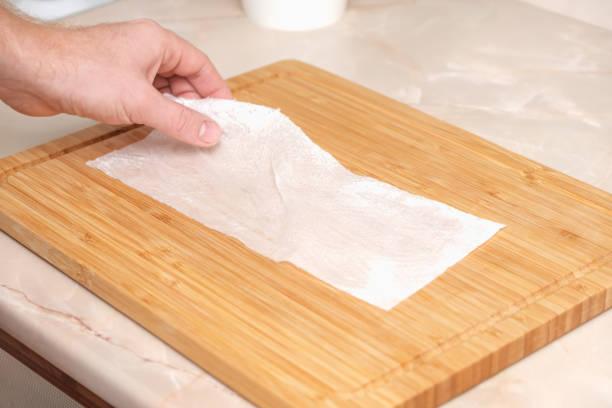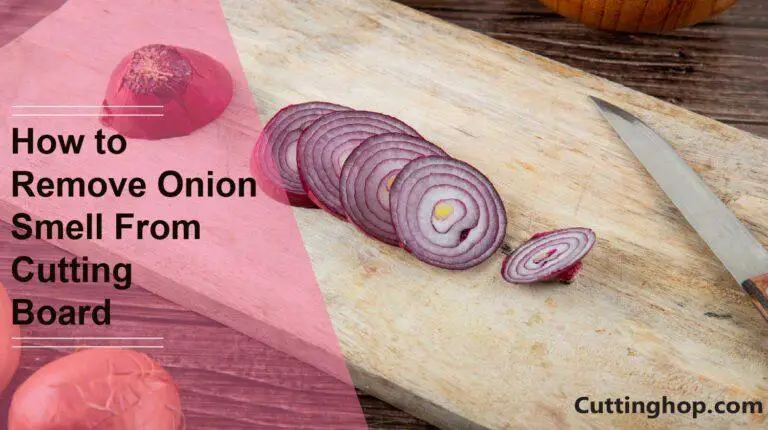How To Oil A Bamboo Cutting Board? Expert Tips For Oiling

Bamboo cutting boards are a great addition to any kitchen. They are sturdy and long lasting, making them ideal for cutting and chopping food. But like any kitchen tool, they must be appropriately maintained to keep them in good condition.
One of the most important ways to keep your bamboo cutting board in top shape is to oil it regularly. But do you know how to oil a bamboo cutting board? Apply food-grade mineral oil to the board using a clean cloth, let it absorb, and wipe off excess.
However, oiling a bamboo cutting board not only helps keep it functioning correctly but also makes it look beautiful. This blog will discuss the steps necessary to properly oil a bamboo cutting board.
How To Oil A Bamboo Cutting Board? A Step-By-Step Guide
Oiling a bamboo cutting board is a great way to keep it in good condition and prolong its lifespan. Here’s how to oil a bamboo cutting board:
Select the right oil
When oiling a bamboo cutting board, the right oil is vital. Generally, food-safe mineral oil is the preferred choice. It won’t go rancid like vegetable oils and is easy to find. It’s also inexpensive and won’t affect the taste of food. Other oils, such as coconut and tung, can also be used, but they may smell unpleasant and darken the board over time.
Clean the cutting board
Once you have the board separated from food crumbs and dirt, it is essential to clean it well. Use a damp cloth or gentle brush to wipe down the board and remove stubborn dirt. Make sure also to clean the grooves of the board as well. Be careful not to soak the board in water, as this could damage the bamboo.
Apply the oil
Once the board is dry, it is time to apply the oil. Pour a few drops of mineral oil onto a clean, soft cloth. Rub the oil over the entire surface of the board in a circular motion. Ensure to cover all edges and corners. It is also vital to apply the oil to the underside of the board. Once the board is fully oiled, allow it to sit for 30 minutes.
Rub the oil into the board
Once you have applied oil to the board, it is time to rub it into the wood. Take a soft, dry cloth and spread the oil circularly, ensuring the board is evenly and thoroughly coated. Make sure to get into all the grooves and crevices.
Let the board dry
After oiling the board, allow it to dry completely before using it again. Depending on the humidity, this can take an hour to 12 hours. Place the cutting board in a dry, well-ventilated area and avoid direct sunlight. Check the board periodically to ensure it has dried and is ready for use.
Is Cutting Board Oil Necessary?

Cutting board oil is not required to keep a cutting board in good shape, but it is strongly suggested. Here are some of the reasons:
Moisture Protection:
The oil on a cutting board makes a barrier that keeps moisture from getting into the wood. This is especially important for cutting boards, often wet with water and other liquids.
Stops Cracking and Warping:
Cutting boards can dry out, crack, and warp over time if not regularly oiled. By oiling the wood, you can keep it soft and stop it from drying out and becoming brittle.
Antibacterial Properties:
Some cutting board oils, like tea tree oil or lemon oil, have natural antibacterial properties that can kill bacteria and other germs on the board’s surface.
Improving The Way It Looks:
Cutting board oil can help bring out the natural color and grain of the wood, making it look more affluent and more beautiful.
Overall, you can use a cutting board without lubricating it, but doing so can shorten the life of the board and could make the food being prepared less safe. So, it’s best to oil your cutting board often to keep it in good shape and last longer.
People Also Ask
What type of oil should I use for my bamboo cutting board?
Food-safe mineral oil is the best type of oil to use for a bamboo cutting board.
How often should I oil my bamboo cutting board?
It is recommended to oil your bamboo cutting board every month or as needed. It will help keep it in good condition and maintain its appearance.
Should I take any special precautions when oiling my bamboo cutting board?
Yes, several precautions should be taken when oiling a bamboo cutting board:
- Make sure to use a food-safe mineral oil to avoid any contamination.
- Avoid getting the oil on the sides or edges of the board, as it could cause warping.
- Apply the oil in a thin, even layer and rub it with a soft cloth.
- Allow the oil to soak in for at least an hour before using the board.
Is using my bamboo cutting board safe after it has been oiled?
Yes, using your bamboo cutting board after oiling is safe. The oil will help to seal the wood and protect it from water damage. The oil also helps to keep the board from splitting or cracking over time.
Final Thought
To keep a bamboo cutting board in good shape and ensure it lasts a long time, you must oil it. By putting on thin layers of food-grade mineral oil, letting it soak in, and wiping off any extra, you can help protect your bamboo cutting board from damage, moisture, and bacteria.
If you oil your bamboo cutting board every few months or as needed, you can bring out its natural color and beauty and keep it clean to use to prepare food. So, how to oil a bamboo cutting board? These simple steps can significantly affect how long your bamboo cutting board lasts and how safe and clean it stays over the years.



